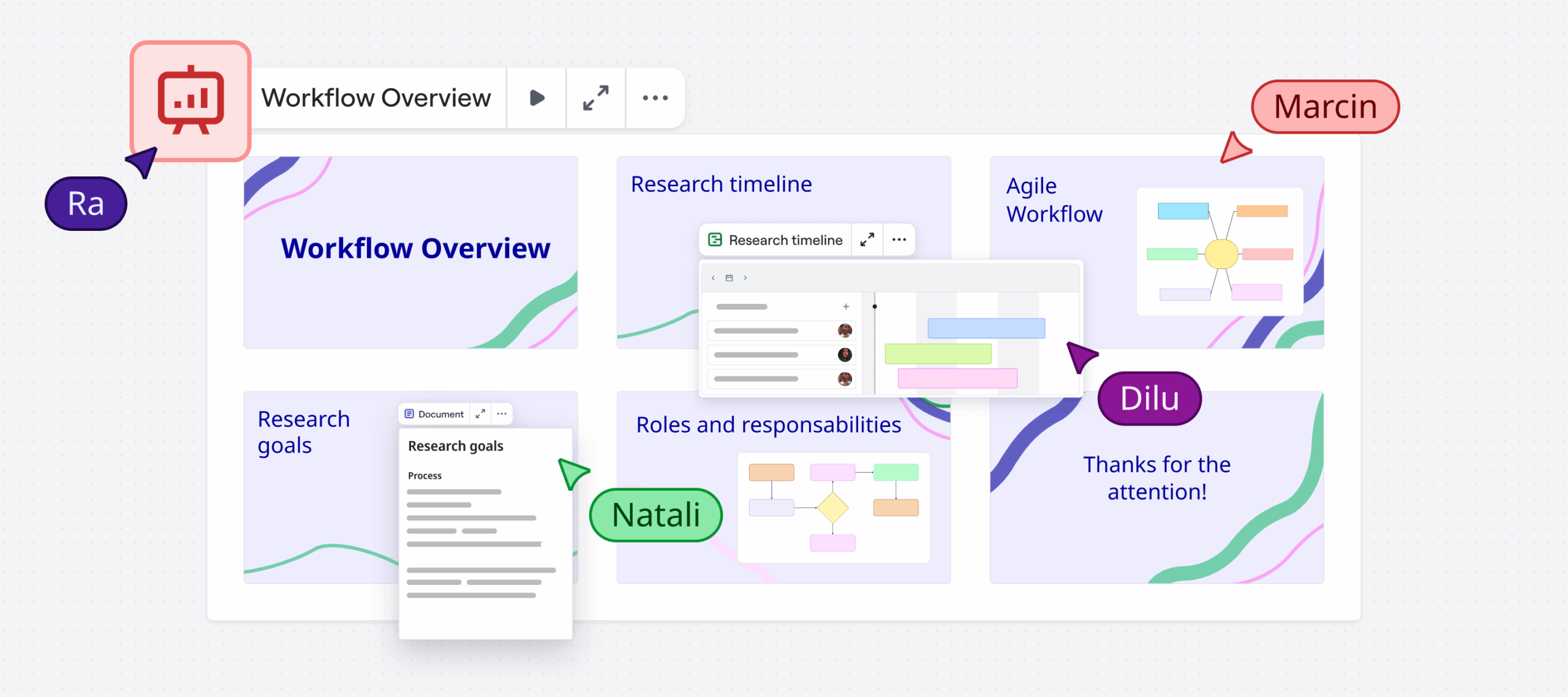Businesses that want to stay competitive have come to embrace their business models by using approaches such as Agile Scrum, Lean Startup, and design thinking. By integrating new frameworks, which rely heavily on collaborative teamwork, we are not only changing the way we work together but also facing the problem of rolling out all the benefits to remote workers. The most important thing to remember is that all these shifts we make in the way we work cannot change our nature.
According to a TINYpulse report, “27% of remote workers say they have experienced a work-related problem because they weren’t in the same place as their team.” And this happens despite the use of modern technologies.
We use 75% of our brain for processing visually.
DAN ROAM, Founder of Napkin Academy
Here at Miro, we have seen how teams at different companies struggle to adapt their processes to the lack of in-person communication or at least the visual component of collaboration.
If you are a Scrum Master or an Agile coach, before you read further, imagine how it feels for remote team members when a whiteboard goes offline; they can no longer put pen to paper or attach a sticky note to the board, and you can’t see engagement in real-time or manage the process effectively.
What Scrum Team leaders usually start doing at this moment is trying to use video conferencing to make the process more natural. Video conferencing is a common alternative, but it can’t replace the feeling of physicality and is subject to its own problems such as camera failures and bad audio connectivity. This alternative still limits engagement due to the inability of the team to fully participate.
Basically, what companies are trying to achieve by integrating video conferencing is to replicate the experience of physical collaboration online. The solution? Simply build a hybrid environment. The main characteristics of this environment are basically the same as a physical collaborative environment: human comfort (visual and acoustic), spatial planning, and the ability to participate in full and react properly when needed. The only thing that differentiates a hybrid environment is that all participants must have complete access to any device they prefer, at any time.
A hybrid environment combines different technological advances to create a virtual environment that mimics a physical space. By incorporating different sources of data, such as voice, video, images, and documents, a hybrid space facilitates greater engagement and can improve the productivity of an entire organization.
Think of a hybrid space as merging office spaces, video conferencing, whiteboarding, and file sharing into one dynamic online location, which increases transparency and teamwork. It becomes a hub where every team member can make a contribution and see the project as it develops.
What kind of tool can help to build a hybrid environment?
Tools like instant messaging, channels, and video conferencing all aim to do this. They do a great job of providing an interactive environment for teams but lack a crucial aspect: a way to convey visual information.
Shared spaces like online whiteboards can help create a phy-gital environment. An online whiteboard is far more than just a blank surface on which to write and draw; it allows all team members to collaborate in a visual space in real-time, just as if they were in the same room. Participants are able to share project files, leave comments, refer to team members, and use emojis, text, and video chats. The work can be seen by all participants, helping them quickly develop a shared understanding.
Integration with commonly used applications, which development, product, and design teams use on a daily basis, can not only save your team’s time and energy but foster cross-team collaboration. For example, integrating Jira with a visual workspace like Miro provides a visual component to a Scrum Team Sprint Planning. Other stakeholders can be added as viewers and commenters with no additional license fees. By installing the Miro add-on for Jira, designers can attach boards to issues and let the Development Team and Product Owners quickly view or contribute to visual schemes or prototypes right from Jira.
But before your team starts working in a new hybrid space, we recommend that you develop the rules for using this space, which should be accepted by all the team members.
The rapid growth of SaaS products has created departmental silos by launching niche tools for those departments. As a result, the expansion of cross-team collaboration became limited. Creating a hybrid space is important to ensure that a new tool you are adding to a team’s workflow can be easily integrated with the current toolkit and doesn’t limit cross-team collaboration.
We asked one of our clients, Group Partners, to share their hybrid collaboration guidelines, which exemplify their implementation of a new “board collaboration mindset.”
By working this way, we can literally share what we’ve seen. It’s visual and therefore others can see it. Because they can see, they can understand. And because they understand, they can engage and contribute to what needs doing.
The boar isdn’t meant to be pretty. If you truly want engagement, encourage every contribution. The most productive and interactive sessions will be a little messy.
- Have clear protocols for what you want people to contribute and how. Set the ground rules for the session.
- Determine identifiers and then make good use of them. Apply codes or symbols to build a common language. Remember, not all team members may share a common language.
- The more dynamic a session – especially with a lot of people – the more useful chat will be.
- Make sure someone acts as the ‘authority’ to facilitate changes and consolidate ideas.
Make sure someone acts as the ‘authority’ to facilitate changes and consolidate ideas.
Based on the above, it is crucial to adapt the chosen approach to your business reality. It is especially important to create a comfortable hybrid environment for both onsite and remote team members to get the best results from the chosen approach.






